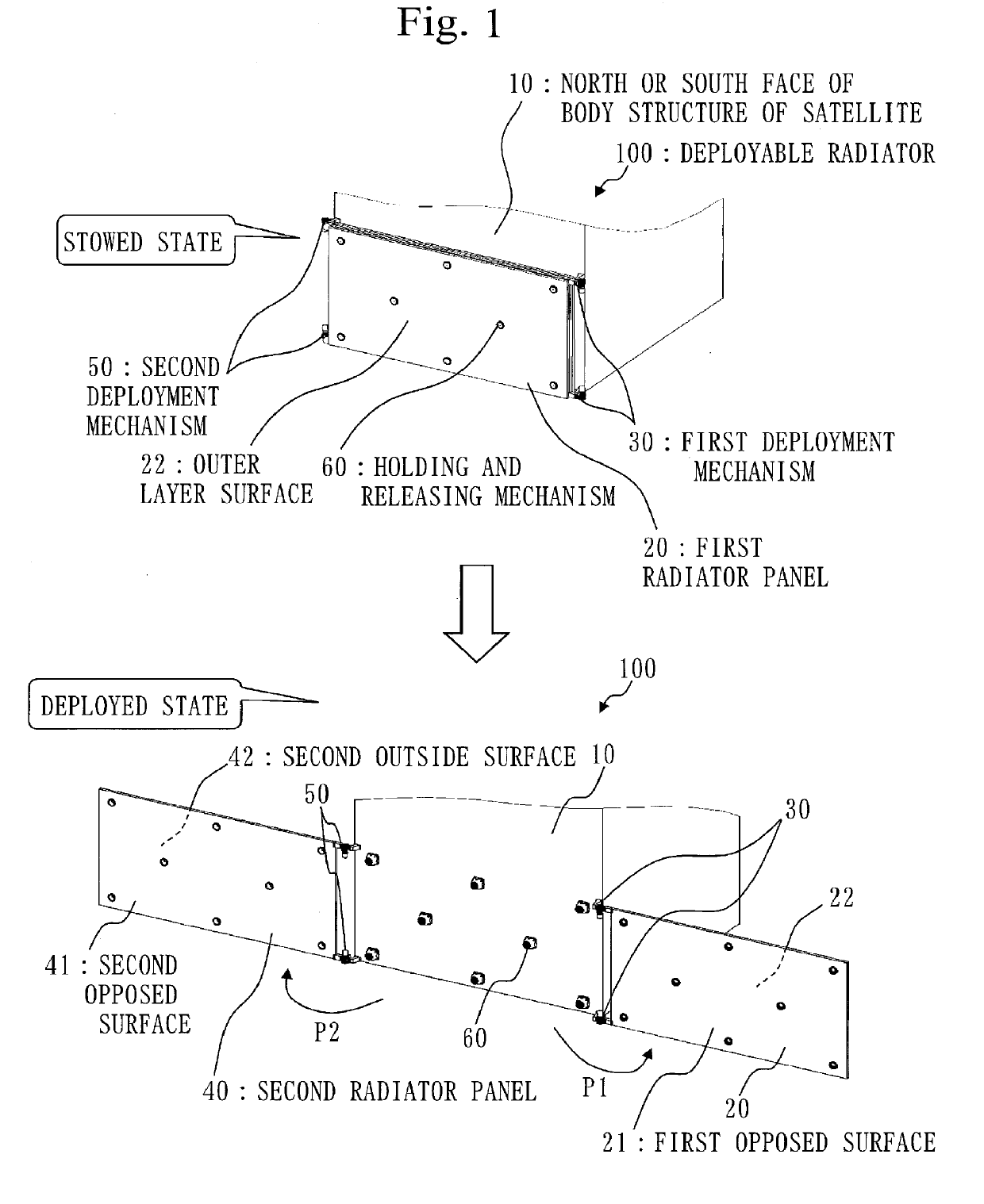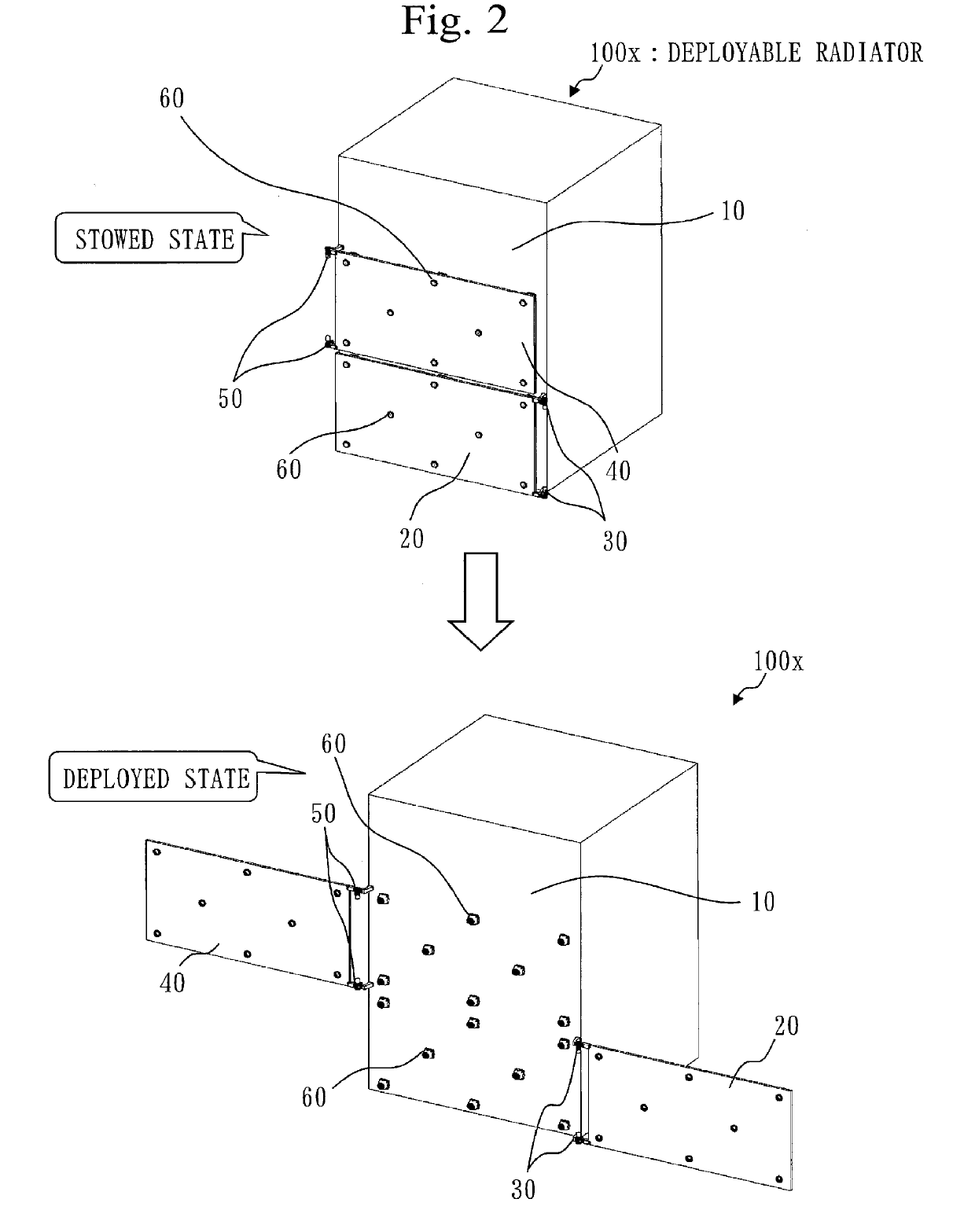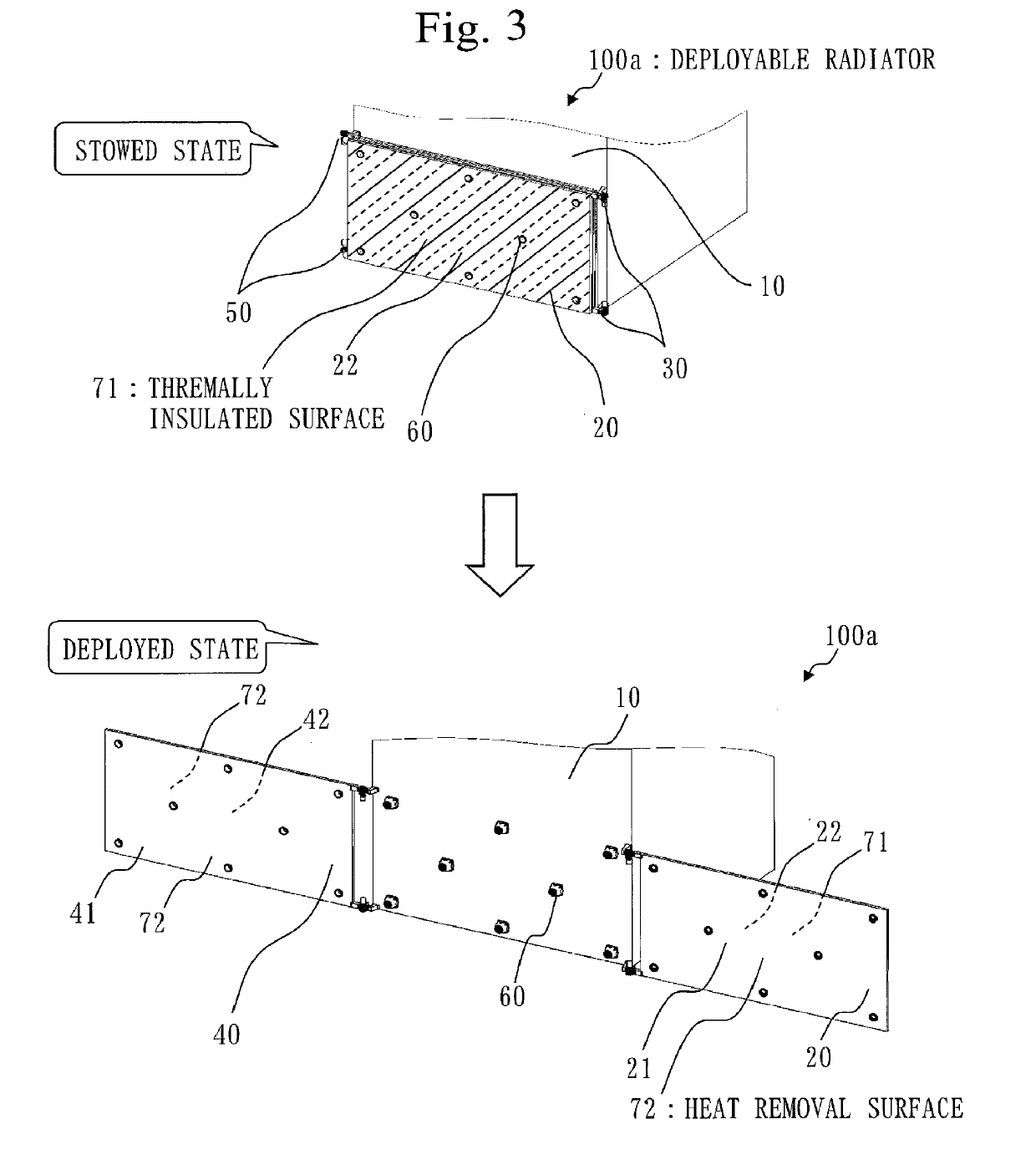Deployable radiator
- Summary
- Abstract
- Description
- Claims
- Application Information
AI Technical Summary
Benefits of technology
Problems solved by technology
Method used
Image
Examples
first embodiment
[0029]***Description of Configuration***
[0030]A configuration of a deployable radiator 100 according to this embodiment will be described, using FIG. 1. FIG. 1 illustrates a stowed state and a deployed state of the deployable radiator 100.
[0031]The deployable radiator 100 is mounted on a north or south face 10 of the body structure of a satellite.
[0032]The deployable radiator 100 includes a first radiator panel 20, a first deployment mechanism 30, a second radiator panel 40, a second deployment mechanism 50, and holding and releasing mechanisms 60.
[0033]Hereinafter, illustration of a flexible tube that connects a steam pipe in the body structure of the satellite and a condenser tube in each radiator panel will be omitted.
[0034]The first radiator panel 20 is deployably connected to the north or south face 10 of the body structure of the satellite by the first deployment mechanism 30.
[0035]The first deployment mechanism 30 connects the first radiator panel 20 to the north or south fac...
second embodiment
[0053]In this embodiment, a difference from the first embodiment will be mainly described.
[0054]In this embodiment, a same reference numeral is given to a component that is the same as the one described in the first embodiment, and a description of the component may be omitted.
[0055]In this embodiment, a description will be given about a deployable radiator 100a in which, while minimizing spacecraft heat loss during orbit raising, an amount of heat removal after a satellite has reached a geostationary orbit can be more maximized than that in the first embodiment and a mass of the satellite can be minimized.
[0056]***Description of Configuration***
[0057]A configuration of the deployable radiator 100a according to this embodiment will be described, using FIG. 3.
[0058]As illustrated in FIG. 3, the outer layer surface 22 of the first radiator panel 20 becomes an outermost layer surface in a stowed state. Accordingly, in order to minimize the spacecraft heat loss during the orbit raising,...
third embodiment
[0087]In this embodiment, a difference from the first embodiment and the second embodiment will be mainly described.
[0088]In this embodiment, a same reference numeral is given to a component that is the same as the component described in the first and second embodiments, and a description of the component may be omitted.
[0089]***Description of Configuration***
[0090]A configuration of a deployable radiator 100b according to this embodiment will be described, using FIG. 4.
[0091]In this embodiment, it is assumed that both surfaces of the first radiator panel 20 and both surfaces of the second radiator panel 40 are the heat removal surfaces 72.
[0092]As illustrated in FIG. 4, the first radiator panel 20 includes a thermally insulated panel 110 that covers at least a portion of the outer layer surface 22 in a state where the first radiator panel 20 is opposed to the north or south face 10 of the body structure of a satellite. The thermally insulated panel 110 is also referred to as a ther...
PUM
| Property | Measurement | Unit |
|---|---|---|
| Structure | aaaaa | aaaaa |
| Thermal properties | aaaaa | aaaaa |
Abstract
Description
Claims
Application Information
 Login to View More
Login to View More - R&D
- Intellectual Property
- Life Sciences
- Materials
- Tech Scout
- Unparalleled Data Quality
- Higher Quality Content
- 60% Fewer Hallucinations
Browse by: Latest US Patents, China's latest patents, Technical Efficacy Thesaurus, Application Domain, Technology Topic, Popular Technical Reports.
© 2025 PatSnap. All rights reserved.Legal|Privacy policy|Modern Slavery Act Transparency Statement|Sitemap|About US| Contact US: help@patsnap.com



